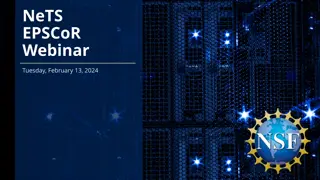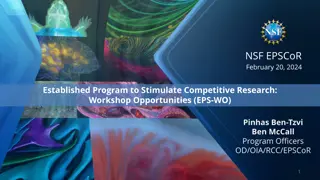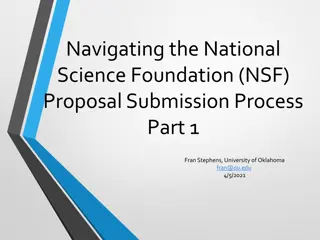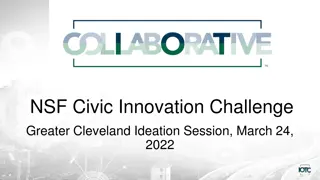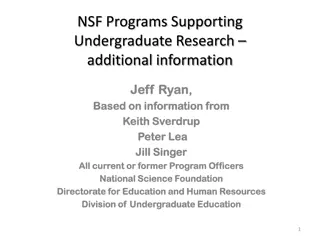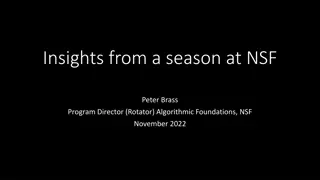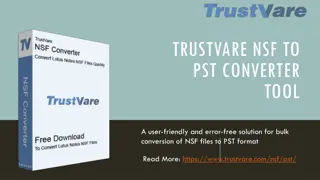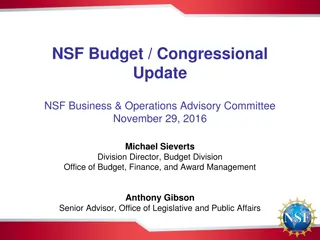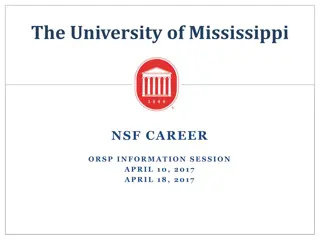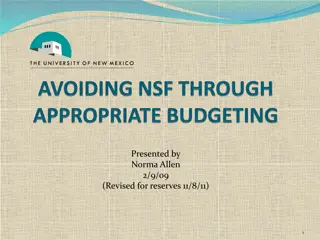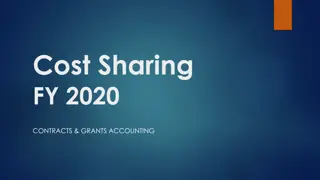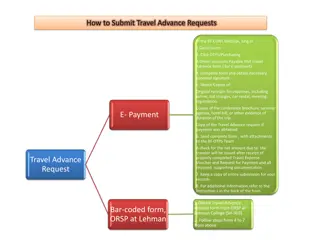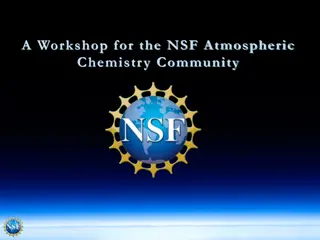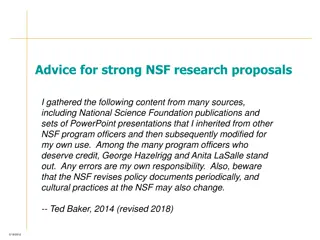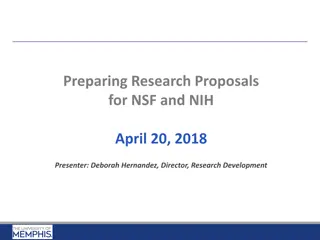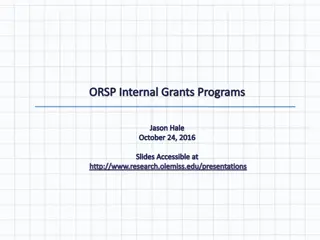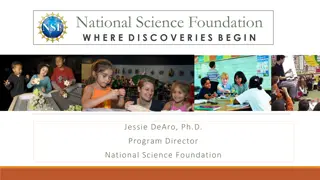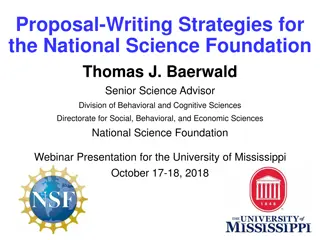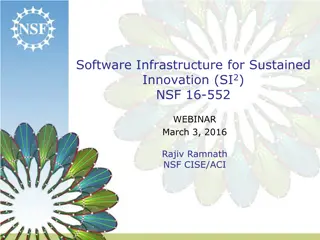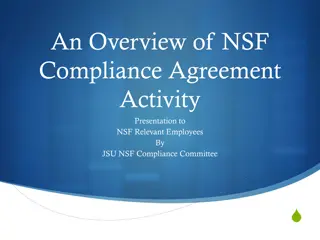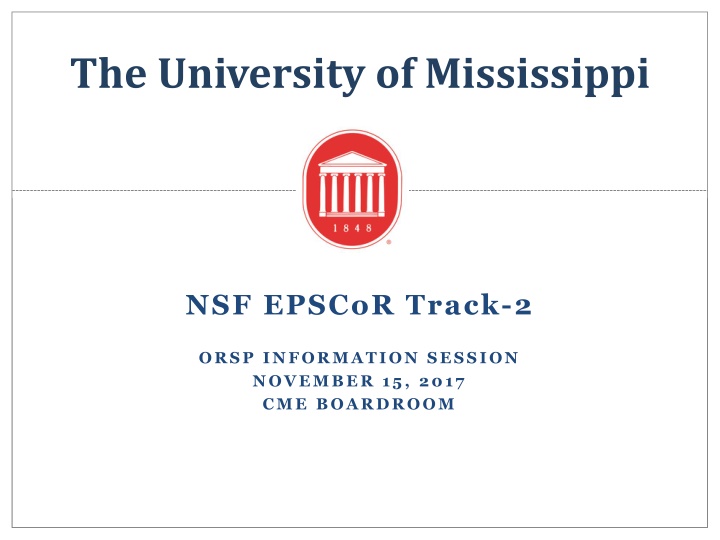
The Relationship between Genome and Phenome - NSF EPSCoR Track-2 Information Session
Explore the theme of understanding the relationships between the genotype and phenotypic characteristics at The University of Mississippi's NSF EPSCoR Track-2 information session. Delve into the central challenge of grasping the implications for various fields through innovative interdisciplinary approaches.
Download Presentation

Please find below an Image/Link to download the presentation.
The content on the website is provided AS IS for your information and personal use only. It may not be sold, licensed, or shared on other websites without obtaining consent from the author. If you encounter any issues during the download, it is possible that the publisher has removed the file from their server.
You are allowed to download the files provided on this website for personal or commercial use, subject to the condition that they are used lawfully. All files are the property of their respective owners.
The content on the website is provided AS IS for your information and personal use only. It may not be sold, licensed, or shared on other websites without obtaining consent from the author.
E N D
Presentation Transcript
The University of Mississippi NSF EPSCoR Track-2 ORSP INFORMATION SESSION NOVEMBER 15, 2017 CME BOARDROOM
Very Brief Introductions ORSP UM Attendees; then UMMC Attendees Please Stand Up Name, Rank, and Department Any prior NSF proposal experience/success? Any experience with EPSCoR? Track-2?
Theme: Understanding the Relationship between Genome and Phenome Page 6 of solicitation (PDF) Central Challenge: understanding relationships between the genotype and the set of phenotypic characteristics displayed by an organism. Better understanding would have implications for medicine, agriculture, biotechnology, ecology, evolution, and other fields.
Theme: Understanding the Relationship between Genome and Phenome Page 6 of solicitation (PDF) Proposers should pursue innovative, inter- disciplinary approaches toward understanding the factors and features that produce particular phenotypes in individuals and/or populations including but not limited to genomic, transcriptomic, epigenetic, and environmental
Theme: Understanding the Relationship between Genome and Phenome Page 6 of solicitation (PDF) teams that are using relevant technologies/tools that address multiple levels of organization from genome-cellular-organismal and population are encouraged. These efforts may include the work of biologists, physicists, chemists, engineers, informaticians, and other scientists.
Theme: Understanding the Relationship between Genome and Phenome Page 6 of solicitation (PDF) Proposals may use any combination of experimental, computational, and/or theoretical approaches with any appropriate species.
Funding Up to 5 awards may be made Projects can be up to 4 years. Up to $1M/year (for 2-juriscition projects Mississippi plus one) Up to $1.5M/year (for 3 or more jurisdiction projects MS plus two or more) Prime award to lead institution; subcontracts to partners Available Direct Costs are considerably less UM s on-campus research F&A Rate is 46% of Modified Total Direct Costs for on-campus projects Each sub-recipient would use its own F&A rate
Eligibility Mississippi is an EPSCoR Jurisdiction. Each institution in an EPSCoR jurisdiction can submit one proposal as the lead institution (no limit to number of non-lead participations) UM and UMMC could each submit an application as lead Other EPSCoR states: See page XX of solicitation Each proposal: one PI and up to 4 co-PIs Each collaborating institution will have at least one co-PI Any individual can only be a PI or co-PI on one EPSCoR RII Track-2 award at any given time Can have multiple other senior personnel (not co-PIs)
NSF EPSCoR Track-2 Page https://www.nsf.gov/funding/pgm_summ.jsp?pims_id=505263
NSF EPSCoR Track-2 Page https://www.nsf.gov/funding/pgm_summ.jsp?pims_id=505263
NSF EPSCoR Track-2 Page https://www.nsf.gov/funding/pgm_summ.jsp?pims_id=505263
About EPSCoR JUNK
Proposing to NSF NSF PAPPG 17.1 Proposal & Award Policies Procedure Guide: https://www.nsf.gov/pubs/policydocs/pappg17_1/index.jsp Part II: Proposal Preparation Instructions II.C: Proposal Contents II.C.2: Sections of the Proposal Specifics Solicitation overrides to PAPPG: 20 page project description (rather than standard 15 for NSF) Very Detailed instructions on what sections to include No letters of Collaboration Up to 4 letters of support See solicitation pages 8-11 of Track-2 solicitation
NSF Merit Review Criteria Standard NSF (see page 11-12 of solicitation) Intellectual Merit Broader Impacts EPSCoR Track-2 Specific (see pages 12-13) Research Capacity Interjurisdictional Collaboration Workforce Development Jurisdictional Impacts Integration of Project Elements
UM (Oxford) Selection Process Stage 1: Non-binding 1-page (max) internal notice of intent to ORSP by 11/16/17 tomorrow Abbreviated Project Summary; List Known Collaborators/Institutions Submit via InfoReady Review Portal: https://olemiss.infoready4.com/ Stage 2: (2-5 pages) by 11/21 Tuesday NSF-Style Project Summary (1 page) Confirmed Collaborators (with proof) Extremely Abbreviated NSF Project Description Try to address all/most sections listed in the Solicitation ORSP will announce internal winner by 11/22 ORSP will submit LOI by 11/27 (Monday after T Giving)
Nathan Hammer Observations and Suggestions Q/A Others in the room with Track-2 Experience weigh in?
Letter of Intent Submitted by ORSP for UM (Oxford) by Mon 11/27 NOT SEEN by REVIEWERS/PANELISTS NOT USED to JUDGE MERIT of PROPOSED RESEARCH Synopsis: 2,500 characters max Other Comments: 2,500 characters max Name participating EPSCoR Jurisdictions Anticipated PI (one) Up to four other participating personnel (co-PIs from UM, UMMC, or other jurisdictions) this can be changed or deferred, but suggest nailing this now if possible.
ORSP Services Available Enhanced Review of drafts of Project Summary and Proj. Description Mentoring from Research Development Fellows Nathan Hammer in particular has EPSCoR Track-2 experience Glimpse at previous funded proposals Assistance with budget and budget justification Other special services would need to be negotiated early and will depend on time and resources E.g., reviewing Collaborators documents and Biosketches
Research Development Fellows ORSP Research Development Fellows Greg Easson, Professor of Geological Engineering, Director of Mississippi Mineral Resources Institute Christian Sellar, Associate Professor of Public Policy Leadership Nathan Hammer, Associate Professor of Chemistry & Biochemistry Mission is to help faculty be more competitive for grant proposals, including but not exclusively interdisciplinary proposals) Available for discussions, enhanced reviews of CAREER proposal ideas, draft proposals, and full proposals E-mail researchfellows@olemiss.edu

